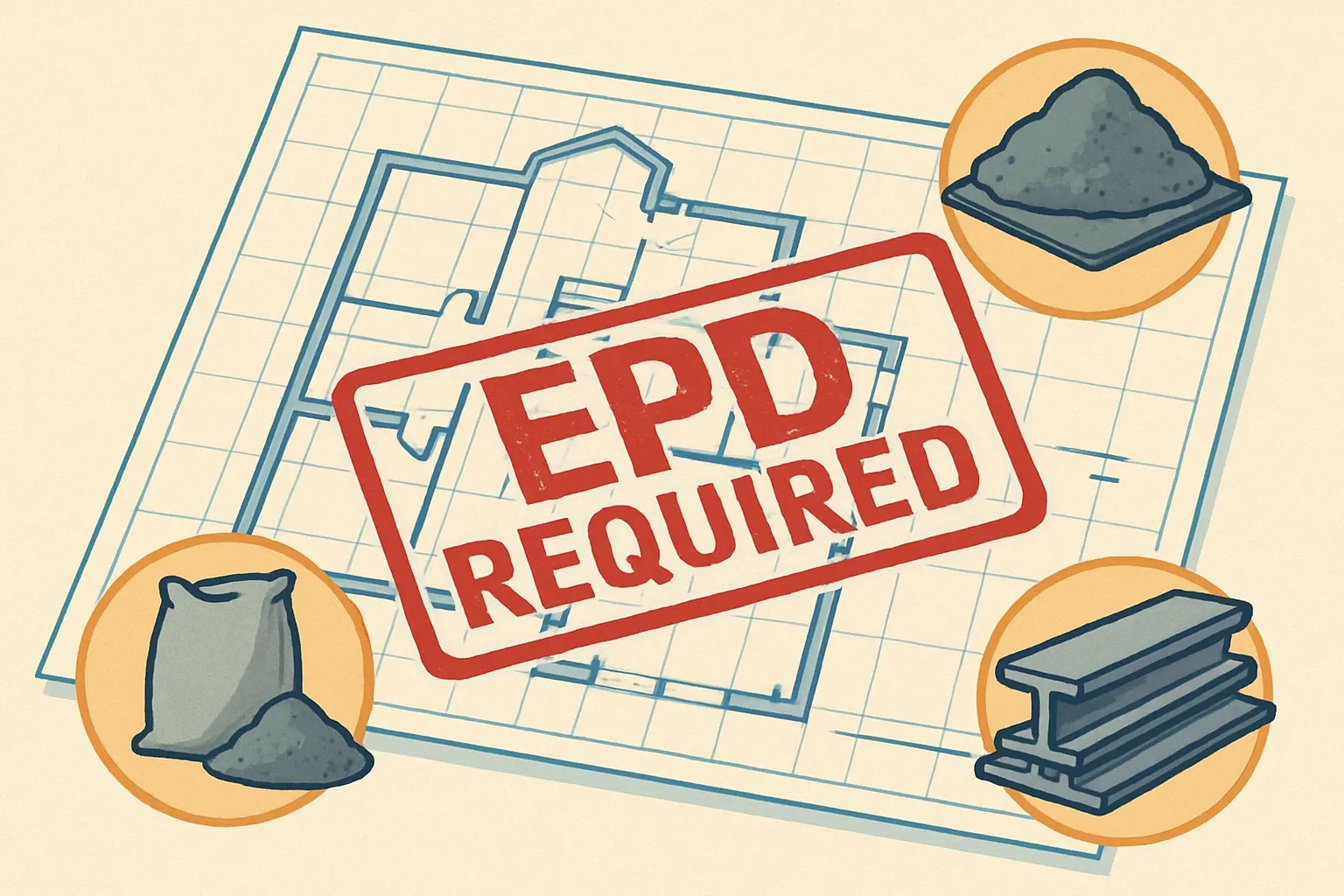New York’s A8202/S8000: the next Buy-Clean wake-up
A bill now moving through Albany would turn New York’s current “please disclose” embodied-carbon guidance into a binding requirement starting January 1 2026. If your concrete, asphalt, or steel ships to a state-funded job without a product-specific EPD, the bid may never even open. Tick-tock.


A quick read of the bill
Assembly A8202 and its Senate twin S8000 direct every Affected Entity—from SUNY to the DOT—to slash embodied carbon on public projects by using operational directives issued by the Office of General Services (OGS) (NY Assembly, 2025). Beginning in 2026, design teams must calculate total embodied carbon for each project, while bidders must supply product and facility-specific EPDs that fall under future global-warming-potential (GWP) ceilings.
From guidance to hard limits
Executive Order 22 already asks agencies to collect EPDs, but it stops at reporting (OGS, 2025). A8202/S8000 goes further by telling OGS to set numeric GWP caps. In plain English: data collection becomes compliance. No EPD, no contract.
Materials in the crosshairs
The bill names three buckets:
- Concrete (ready-mix, precast, CMU)
- Asphalt paving mixtures
- Steel (rebar, plate, structural, cold-formed) OGS can add more every three years.
The clock starts January 1 2026
Projects submitted for permitting after 01-01-2026 must comply if they are new construction over 5 000 ft² or adaptive-reuse/renovations exceeding $1 million (A8202A, 2025). That is one design cycle away for many product lines.
Generic averages need not apply
Only ISO 14025 Type III EPDs tied to a single plant will satisfy the statute. Industry-average declarations or PCR digests will flop, so manufacturers with multiple facilities may need multiple EPDs.
Miss the EPD, miss the bid
New York spent roughly $3.5 billion on vertical construction in FY 2024 (NY Division of Budget, 2024). Losing access to that spend because paperwork is late feels, frankly, avoidable.
Four moves to stay ahead
- Map which SKUs sell into New York State work and trace which facilities make them.
- Pick the PCR your competitors already use—OGS reviewers love comparability.
- Gather 2024 utility, inbound freight, and waste data now; don’t wait for Q1 2026 chaos.
- Lock in an LCA partner who collects data for you (your R&D team will thank you).
What’s next
California, Colorado, and New Jersey are watching New York’s playbook. The market don't wait. Get your plant-level numbers in shape now, and the 2026 deadline turns from threat into competitive edge.
Frequently Asked Questions
Does A8202/S8000 accept industry-average EPDs?
No. The bill specifies product and facility-specific Type III EPDs, meaning each declaration must represent one product from one manufacturing site.
When will OGS publish the actual GWP limits?
The bill leaves timing to OGS, but staff have signaled that draft limits will follow the existing EO 22 reporting dataset in mid-2025.
What projects fall under the law?
Any new state-agency building over 5 000 ft², plus adaptive reuse or major renovations costing more than $1 million, submitted for permit on or after January 1 2026.
Which materials are covered on day one?
Concrete, asphalt paving mixes, and steel (rebar, structural, plate, cold-formed). OGS can add others every three years.
How many EPDs might a multi-plant manufacturer need?
One per unique product-plant combination. If three plants make the same mix design, that’s three separate EPDs.
